Nestled in the historic heart of Kyoto, a centuries-old tradition continues to captivate visitors from around the world. Here, within the serene confines of a traditional tea house, the art of the Japanese tea ceremony unfolds before your eyes. Guided by a revered tea master, you’ll witness the intricate choreography of preparing and serving matcha – a vibrant green tea – as you’re transported back in time. But the true magic lies in savoring each sip, surrounded by the tranquil beauty of a meticulously landscaped garden. What secrets does this time-honored practice hold, and how might it transform your understanding of Japanese culture?
Key Points
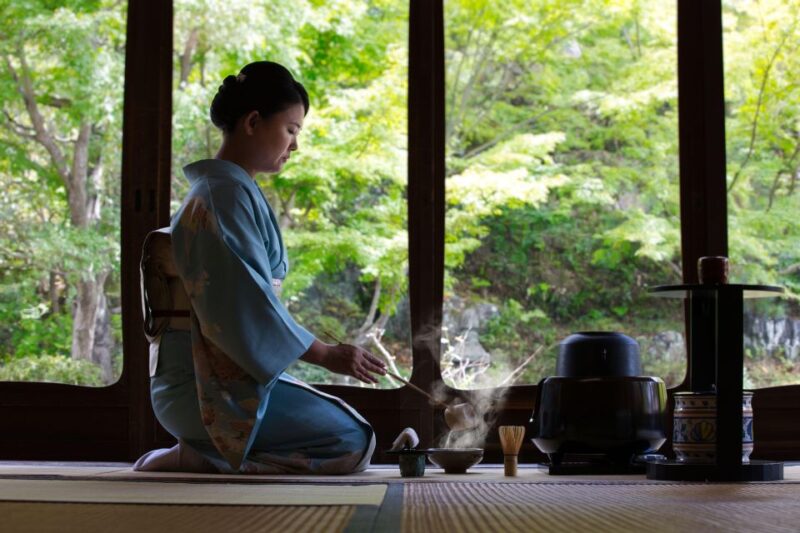
- Experience a 500-year-old traditional Japanese tea ceremony led by an experienced tea master in a tranquil Kyoto garden setting.
- Learn the history, etiquette, and art of preparing and serving matcha tea, and try your hand at whisking your own cup.
- Savor the earthy matcha tea alongside delicate traditional Japanese sweets in a small, intimate group setting.
- Enjoy the serene and harmonious atmosphere of the Sannenzaka Garden, designed by a renowned landscape artist.
- Book in advance to secure a spot for this once-in-a-lifetime opportunity, with flexible cancellation policies up to 24 hours prior.
Traditional Tea Ceremony Experience
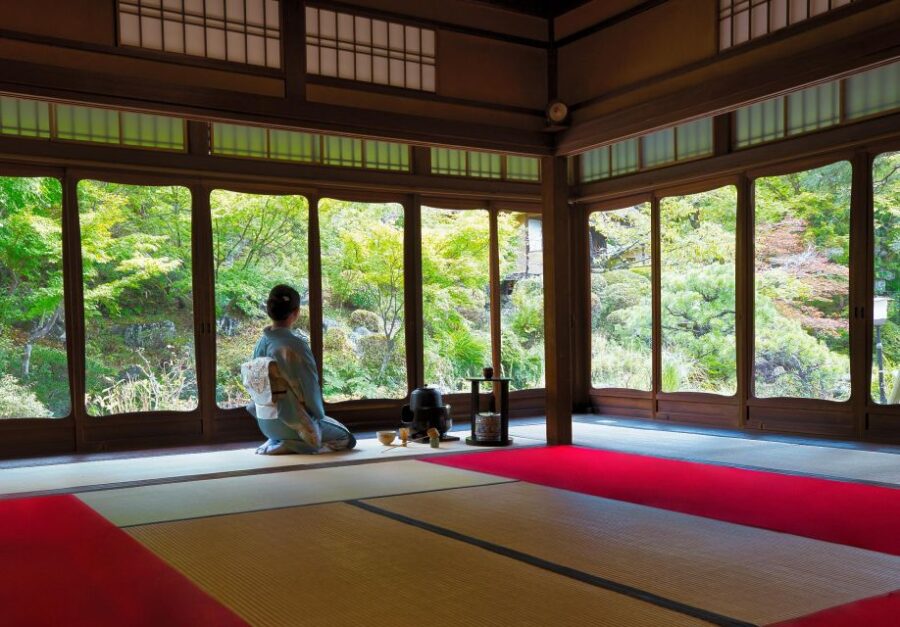
During the traditional tea ceremony experience, participants are immersed in a 500-year-old ritual that showcases the art of preparing and serving matcha tea.
Led by an experienced tea master, the ceremony takes place in a tranquil Japanese garden and tea ceremony house.
Over the course of 45 minutes, guests learn about the history and etiquette of the tea ceremony while watching the precise preparation of the tea.
They then have the opportunity to brew their own matcha and enjoy it alongside a traditional Japanese sweet.
The small group setting, limited to just 10 participants, allows for an intimate and personalized experience that offers a glimpse into this revered cultural tradition.
You can also read our reviews of more tours and experiences in Kyoto.
Tranquil Sannenzaka Garden Setting
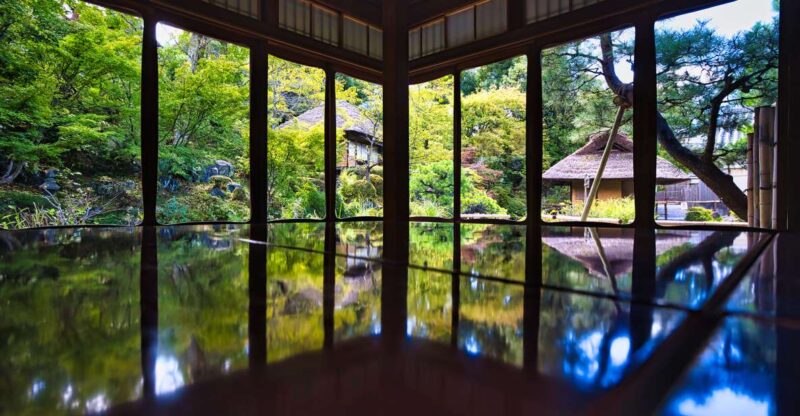
The traditional tea ceremony takes place in a tranquil Japanese garden and tea ceremony house located in the Sannenzaka district of Kyoto.
The renowned landscape artist Ogawa Jihei VII designed the serene surroundings, creating a calming atmosphere for the 500-year-old ritual.
Lush greenery, babbling brooks, and carefully pruned trees evoke a sense of:
- Tranquility
- Simplicity
- Harmony
The traditional architecture of the tea house blends seamlessly into the natural landscape, allowing participants to fully enjoy the meditative experience.
This carefully curated setting provides the perfect backdrop for the tea master’s skilled demonstration and your’ opportunity to learn the art of preparing and enjoying matcha tea.
Renowned Landscape Artist’s Creation
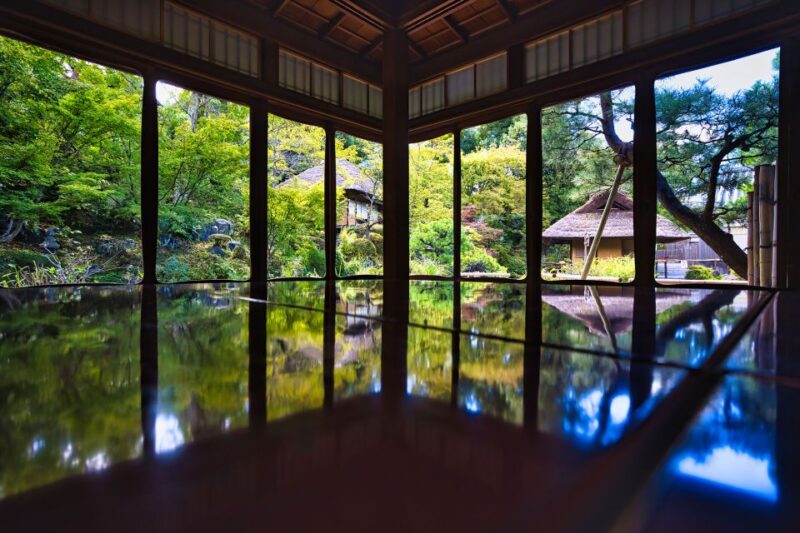
Renowned landscape artist Ogawa Jihei VII designed the serene surroundings of the traditional tea ceremony house in Sannenzaka, Kyoto, creating a calming atmosphere for the 500-year-old ritual. His masterful incorporation of natural elements like stone, water, and greenery evokes a sense of tranquility and harmony. The carefully curated gardens reflect the core principles of Japanese landscape design – balancing form, function, and aesthetics.
| Principle | Description | Significance |
|---|---|---|
| Shakkei | Borrowed scenery | Integrates the surrounding landscape into the garden design |
| Tsukiyama | Artificial hills | Creates depth and visual interest within a limited space |
| Karesansui | Dry landscape | Evokes a meditative mood through the use of gravel and rock formations |
This serene setting provides the perfect backdrop for guests to enjoy the age-old tradition of the Kyoto tea ceremony.
500-Year Tea Ceremony History
The centuries-old tea ceremony tradition has been an integral part of Japanese culture, tracing its origins back to the 6th century when Buddhist monks first introduced the ritual to the archipelago. Over the past 500 years, the ceremony has evolved into a highly revered art form, steeped in symbolism and meticulous attention to detail.
The tea ceremony embodies the Japanese values of:
- Harmony
- Respect
- Purity
- Tranquility
Today, the centuries-old practice continues to captivate both locals and visitors alike, offering a glimpse into Japan’s rich cultural heritage and a moment of serene contemplation amidst the bustling modern world.
More Great Thing To Do NearbyTea Preparation Demonstration by Master
An experienced tea master skillfully demonstrates the meticulous steps involved in the traditional preparation of matcha tea during the 45-minute ceremony. With fluid movements, they carefully clean the utensils, scoop the vibrant green powder, and whisk the tea to a frothy perfection.
Participants watch in rapt attention as the master explains each action, revealing the deep history and significance behind every precise gesture. The aroma of the freshly brewed tea fills the air, whetting the appetite for the upcoming tasting.
Guests are then invited to try their hand at whisking their own cup of matcha, guided by the tea master’s expert tutelage.
Brewing Your Own Matcha Tea
Next, participants eagerly step up to the low table, where they’re guided through the process of preparing their own matcha tea.
Under the tea master’s watchful eye, they scoop the vibrant green powder into their bowls, adding hot water and whisking it into a frothy delight. The participants’ concentration is palpable as they mimic the master’s fluid motions, taking care to achieve the perfect consistency and temperature.
The experience evokes:
- A sense of calm focus
- Appreciation for the art of tea preparation
- Connection to the centuries-old Japanese tea tradition
With the master’s expert instruction, the participants savor the rich, umami-filled matcha, feeling a deeper understanding of this revered cultural practice.
Savoring Traditional Japanese Sweets
Participants then shift their attention to the traditional Japanese sweet, eagerly anticipating its delicate flavors. The tea master presents a variety of seasonal sweets, each meticulously crafted to complement the earthy notes of the matcha tea. As the participants observe, the tea master explains the significance and symbolism behind these confections.
| Wagashi | Description |
|---|---|
| Mochi | Soft, chewy rice cakes filled with sweet bean paste |
| Daifuku | Mochi wrapped around a creamy, sweet filling |
| Higashi | Delicate, bite-sized sweets made from rice flour and sugar |
| Manjū | Steamed buns filled with sweet red bean paste |
Savoring each bite, the participants delight in the harmonious balance of flavors and textures, a true testament to the artistry and tradition of Japanese confectionery.
Booking and Cancellation Information
Demand for this immersive tea ceremony experience is high, so booking in advance is recommended. Visitors can reserve their spot and pay later, with the added flexibility of free cancellation up to 24 hours prior to the event. This allows guests to plan their Kyoto itinerary with confidence, knowing they can easily adjust their schedule if needed.
Savoring this serene Japanese tradition in a tranquil garden setting is a once-in-a-lifetime opportunity that is:
- Likely to sell out quickly
- Offered in an intimate small-group format
- Complemented by the beauty of the surrounding landscape
Don’t miss your chance to experience the art of the Japanese tea ceremony in Kyoto. Reserve now and pay later for this unforgettable cultural experience.
Frequently Asked Questions
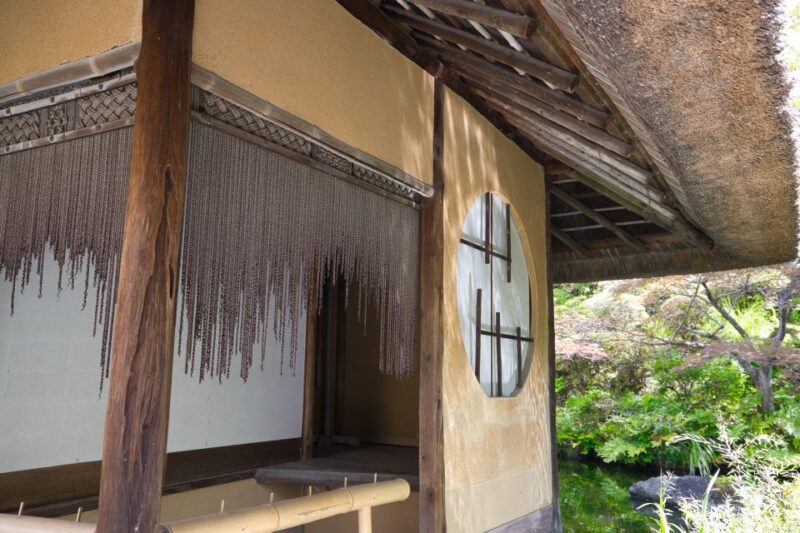
What Should I Wear for the Tea Ceremony?
For a tea ceremony, it’s best to wear clean, comfortable, and modest clothing. Avoid overly casual or revealing attire. Smart casual or traditional Japanese dress would be appropriate and show respect for the cultural experience.
Can I Take Photos During the Ceremony?
Participants are generally allowed to take photos during the tea ceremony, but they should be discreet and avoid disrupting the experience. Checking with the host beforehand is recommended to ensure the proper etiquette is followed.
Is the Tea Ceremony Suitable for Children?
The tea ceremony may not be suitable for young children, as it requires participants to sit quietly and attentively for an extended period. However, older children who can appreciate the tranquility may enjoy this cultural experience.
Is the Tea Ceremony Wheelchair Accessible?
The tea ceremony is generally not wheelchair accessible, as the traditional tea house and grounds may have steps and uneven surfaces. However, some providers may offer modified experiences for guests with mobility challenges. It’s best to inquire about accessibility when booking.
Can I Purchase Additional Matcha Tea or Sweets?
Yes, participants can purchase additional matcha tea or sweets during the tea ceremony experience. Extra servings of tea and traditional Japanese treats can be bought to extend the tasting and immersive cultural experience.
Recap
Enjoy the centuries-old tradition of the Japanese tea ceremony at a tranquil tea house in Kyoto.
Guided by an experienced tea master, you’ll learn the intricate art of preparing and serving matcha tea, savoring each sip amidst the serene backdrop of a beautifully landscaped garden.
Delight your senses as you whisk your own cup of vibrant green tea and indulge in delicate Japanese sweets, all while gaining a deeper appreciation for this revered cultural practice.
You can check if your dates are available here:More Tour Reviews in Kyoto
- The Art of Geisha: Exclusive Show & Traditional Japanese Game
- Tea Ceremony With Kimono and Professional Photoshoot in Kyoto
- Kyoto Arashiyama Bamboo Forest Hidden Hiking Tour
- Kyoto Early Morning Walking Tour: Nature & History
- Small-Group Dinner Experience in Kyoto With Maiko and Geisha
- Private Kyoto Night Tour: Historic Walk at Gion and Fushimi
Not for you? Here's more things to do in Kyoto we have recnetly reviewed
- 5 Best Cruises And Boat Tours In Kyoto
- 14 Best Dining Experiences In Kyoto
- 20 Best Full-Day Tours In Kyoto
- 5 Best 2 Day Tours In Kyoto
- 2 Best 4 Day Tours In Kyoto
- 20 Best Photography Experiences In Kyoto
- 13 Best Dinner Tours In Kyoto
- 25 Best Food Tours In Kyoto
- 14 Best Lunch Experiences In Kyoto
- Kyoto Bus Tour: Iconic KInkakuji, Ginkakuji, Kiyomizu Temple (AW)
- Kyoto Bus Tour: Arashiyama, Kinkaku-ji Review
- Gyoza Cooking Class in Kyoto: Traditional Japanese Dumplings
